Introduction
Despite rapid expansion and interoperability advancements, Web3 encounters entrenched fragmentation. Wallets, assets, and identities are siloed across disparate blockchains, virtual machines, and dApps, obstructing seamless user experience and state continuity. This isolation undermines seamless user experience flows and continuity of state, posing critical barriers to composable and cohesive interactions. The expansive potential of infinite composability is hindered by fragmentation and the complicating user experience flows across siloed states.
- Onboarding friction – Complex wallet setups, excessive ecosystem-specific tooling, and protocol dependencies
- Asset fragmentation – Asset isolation across chains and VMs impair continuous and fluid user journeys across applications
- Gas tokens - Need to acquire and manage gas tokens creates significant entry barriers for new users
Fragmentation has introduced a host of challenges, impacting not only the fluidity of user journeys and cross-chain asset interoperability but also introducing complexities like aggregating disjointed and inconsistent reputation graphs. Fragmentation stands as a substantial barrier to delivering a cohesive and seamless experience to users interacting with the Web3 ecosystem.
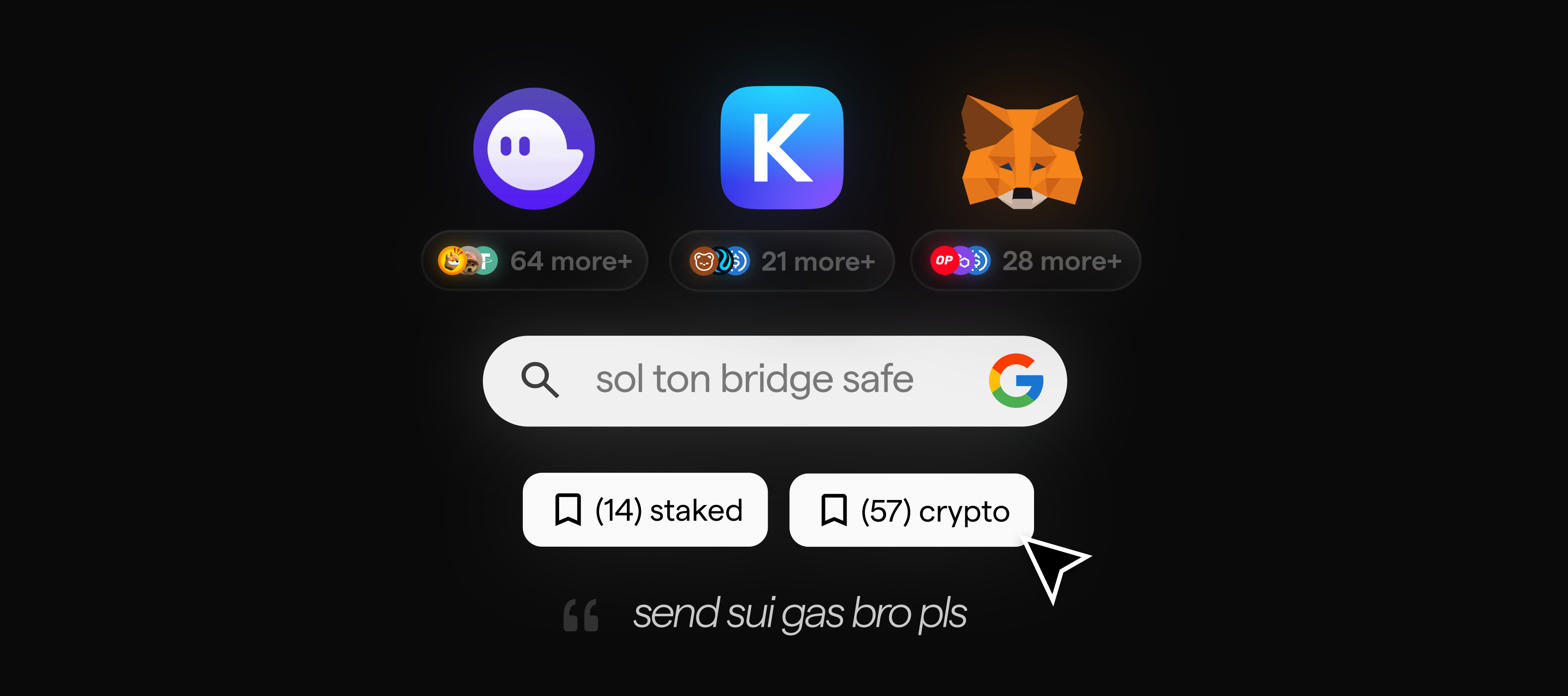
Tria – Consumer chain abstraction across all virtual machines
Tria introduces a consumer-centric framework of chain abstraction primitives that allow for assets from any virtual machine to be interfaced with another as fast, and fluent as native assets, bypassing legacy cross-chain conventions like bridging, swaps or the need to hold gas tokens. This is achieved leveraging Tria's BestPath AVS, a permissionless chain abstraction and intents marketplace that operates in shared state with Unchained, an AVS Layer 2 built on Arbitrum Orbit and MoveVM.
Tria offers two key interfaces: A consumer facing CEX-like wallet with a trading terminal, and the Core SDK comprising of Inception SDK and Mazerunner SDK for developers to integrate shared wallets with SSO onboarding and cross-VM functionality into their dApps. This SDK enables dApps to engage users across VMs and chains, achieving a new level of cross-chain interoperability and composability while enhancing UX continuity and lowering entry barriers for both developers and users.
Inception and Mazerunner SDK
The Core SDK, which combines the Inception SDK and Mazerunner SDK, empowers applications in two key ways. First, it enables seamless user onboarding through single sign-on (SSO) onto a shared wallet infrastructure, ensuring user contunity within an ecosystem. Second, it allows users from traditionally incompatible chains and virtual machines to interact natively with the dApp, effectively making the dapp infinitely composable so applications harness the user base and liquidity of every virtual machine environment.
The wallet infrastructure has support for single sign-on (SSO), automated transactions, gasless transactions, liquidity unification across VMs and more. The Core SDK is a lightweight front-end integration requiring no additional infrastructure or modifications to existing smart contracts, typically integrating within an hour. The SDK is compatible across Web, Mobile, Telegram Mini Apps, Unity, and Unreal Engine.
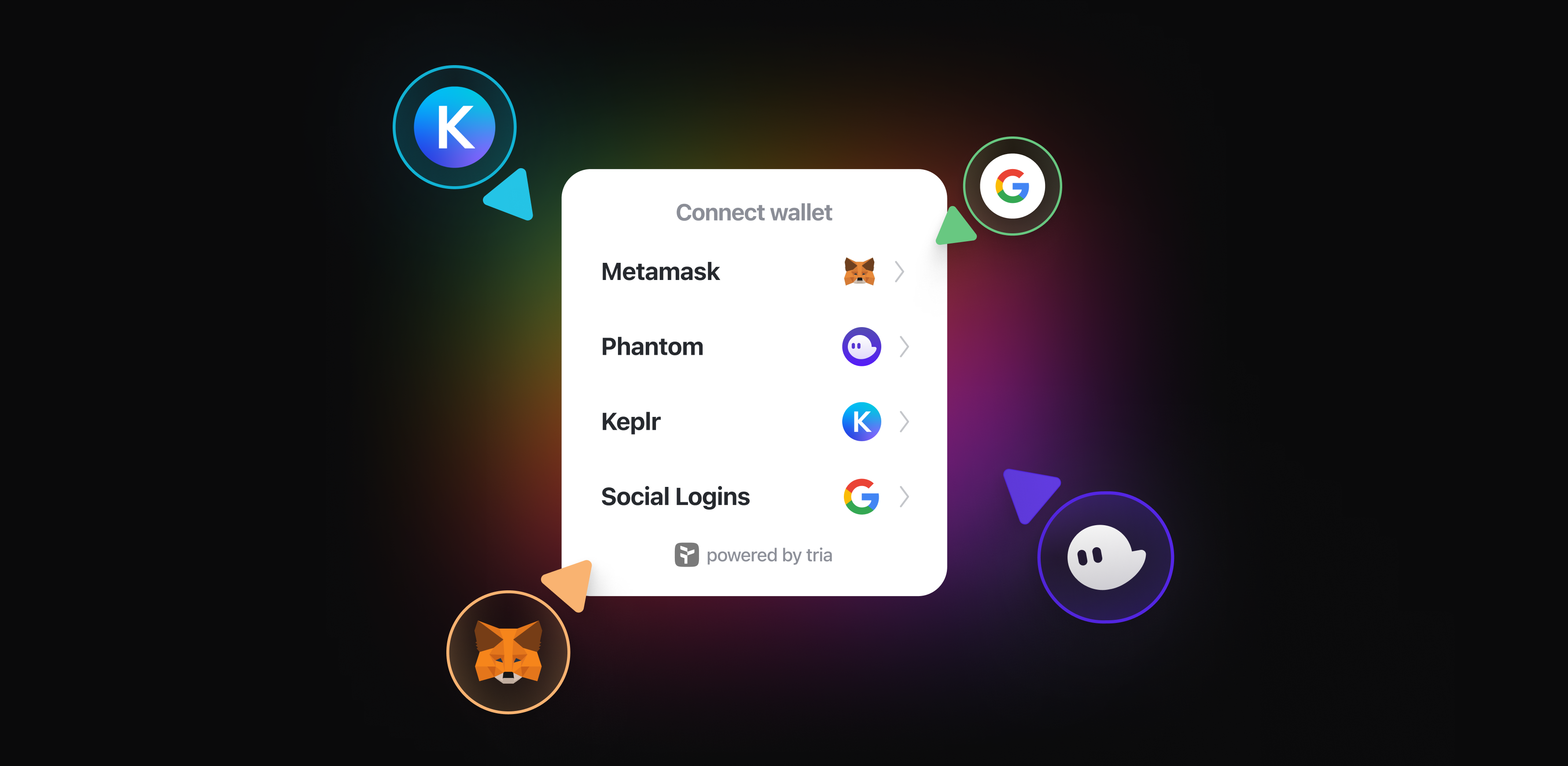
Consumer interface
Within Tria's consumer multi-chain interface, users can toggle between a high-frequency trading terminal optimized for advanced multi-VM, sub-second token trading across chains, and a simplified, everyday crypto wallet experience. The advanced trading mode caters to rapid asset exchanges, while the standard mode offers a seamless, chain-abstracted interface, allowing users to interact with their assets across chains effortlessly where -
Gas abstraction – Pay gas with any token
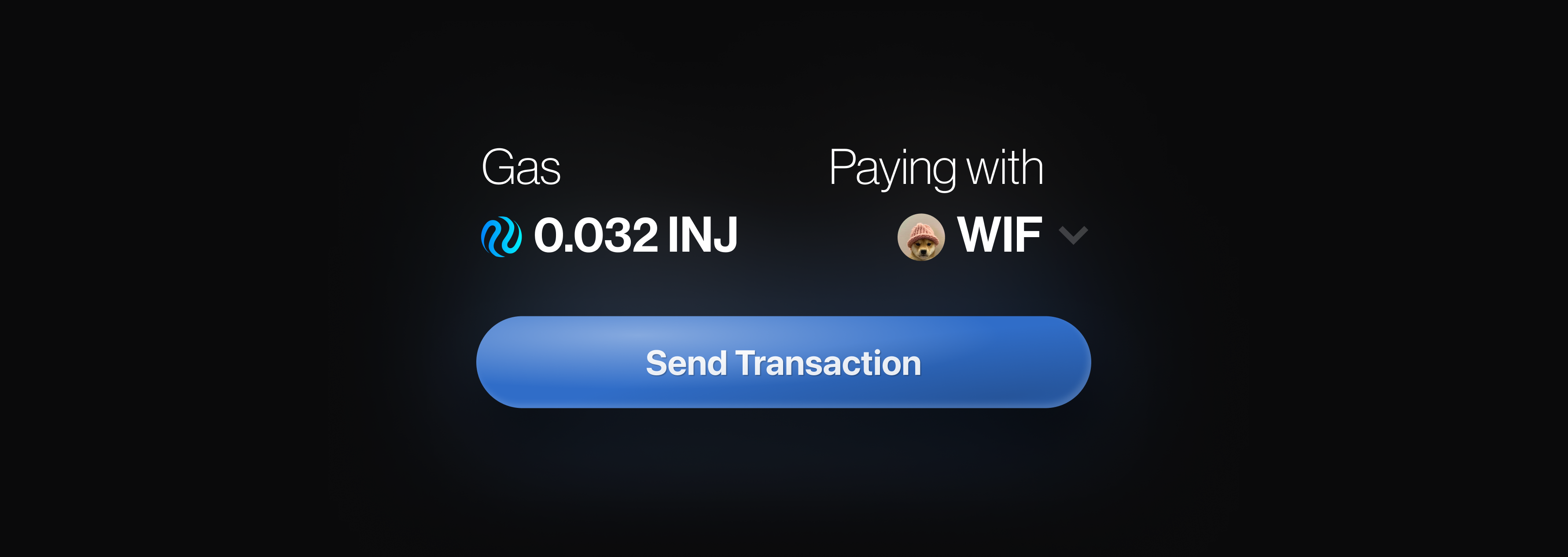
Liquidity unification – Use any asset on any chain in real time
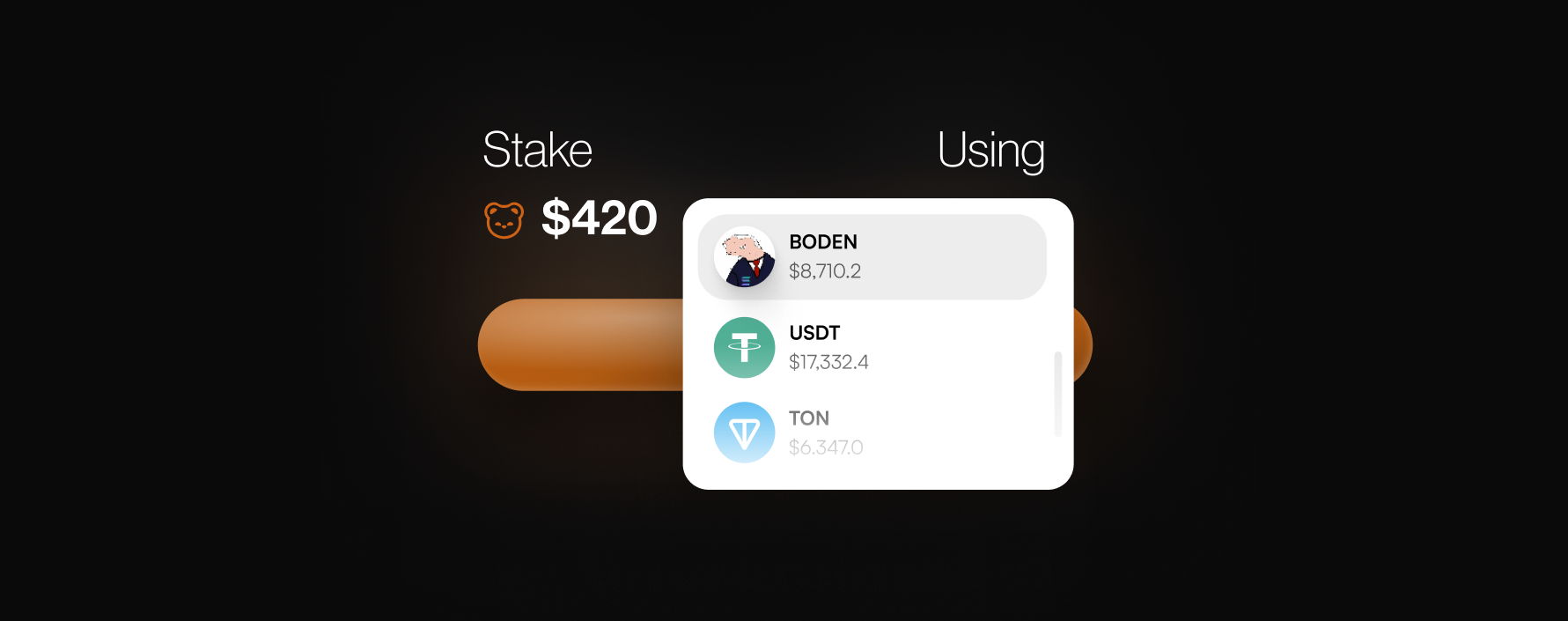
Chain Abstraction
Interfacing across virtual machines (VMs) like the EVM (Ethereum Virtual Machine), SVM (Solana Virtual Machine), Cosmos/IBC, Move VMs, Bitcoin, and others presents significant challenges. Ethereum’s horizontal scaling approach, underpinned by a rollup-centric roadmap, has resulted in a disjointed UX for both users and developers. Alternative virtual machines, appchains, long-tail blockchains, and new L1s exacerbate fragmentation further.
Chain Abstraction is a high-level concept designed to abstract the underlying blockchain infrastructure, facilitating a ‘balance-first’ UX. This model enables users to spend assets across chains seamlessly, irrespective of the specific chain or VM hosting those assets. Chain abstraction removes the need for users to manually switch networks, bridge and swap assets, manage gas tokens, and maintain disparate wallets and tooling. By unifying user interactions across multiple networks, chain abstraction dissolves the intricacies of multi-chain engagement, creating a singular, coherent user experience that spans all VM environments and obfuscates the underlying blockchains.
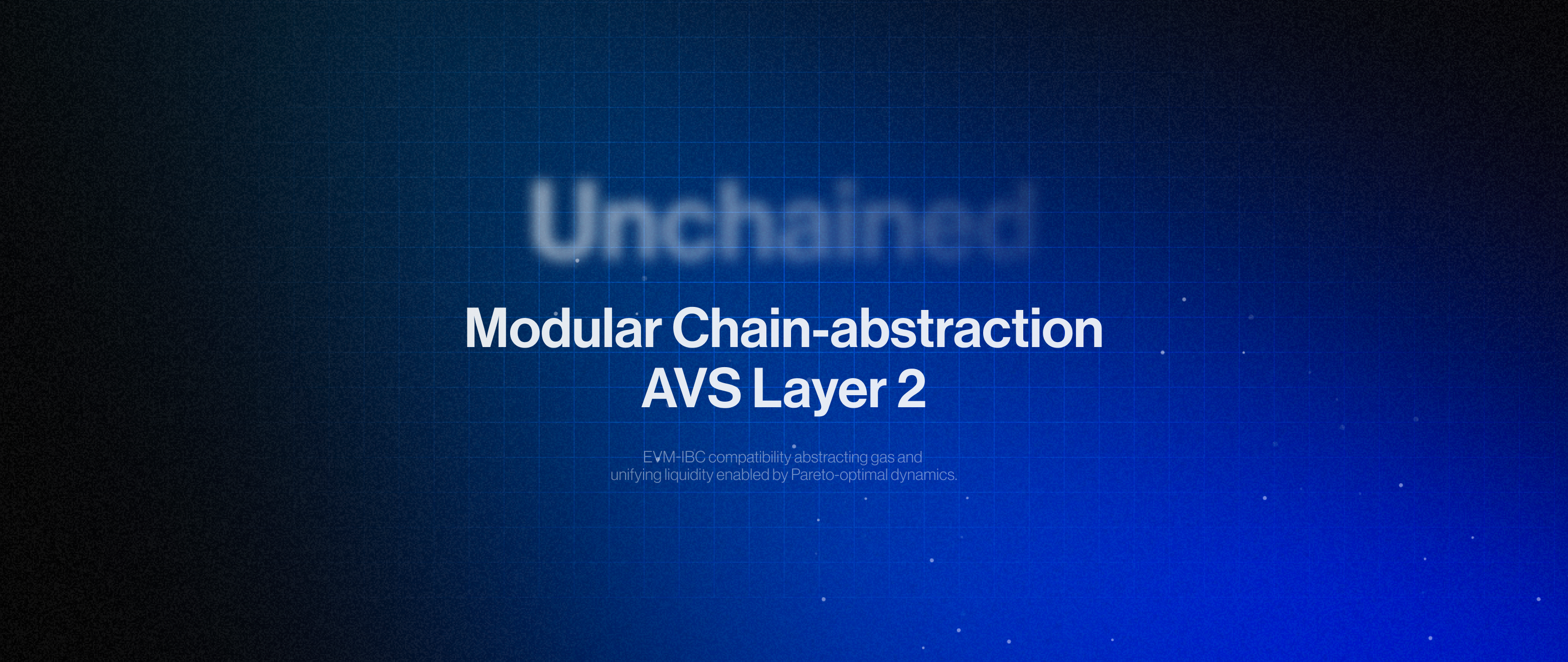
BestPath AVS
BestPath AVS is a permissionless chain abstraction and intent marketplace leveraging a Pareto-optimal incentive structure. In BestPath, Pathfinders form dynamic micro-markets of modular interoperability stacks. These micro-markets enable a competitive ecosystem where solvers, fast-finality guarantors, transport layers, liquidity pools, relayers, paymasters, and other specialized actors engage in capturing, routing, and executing user intents across heterogeneous environments. By coordinating real-time orchestration of atomic execution stacks, BestPath optimizes execution to create a resilient infrastructure for seamless intent fulfillment across a wide range of environments and intent complexities.
Unchained
BestPath operates in shared state with Unchained, an AVS Layer 2 built on Arbitrum Orbit and MoveVM. Unchained coordinates a set of foundational functions integral to BestPath, encompassing automating TSS wallet states, fine-grained permissioning for user wallets and intent flows, comprehensive identity management, and robust credential attestation frameworks, alongside other services.